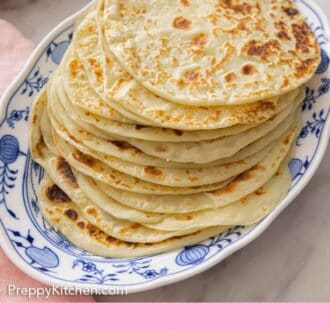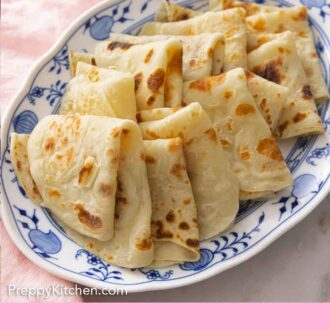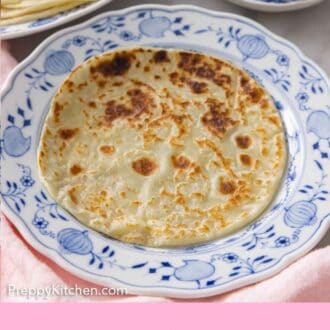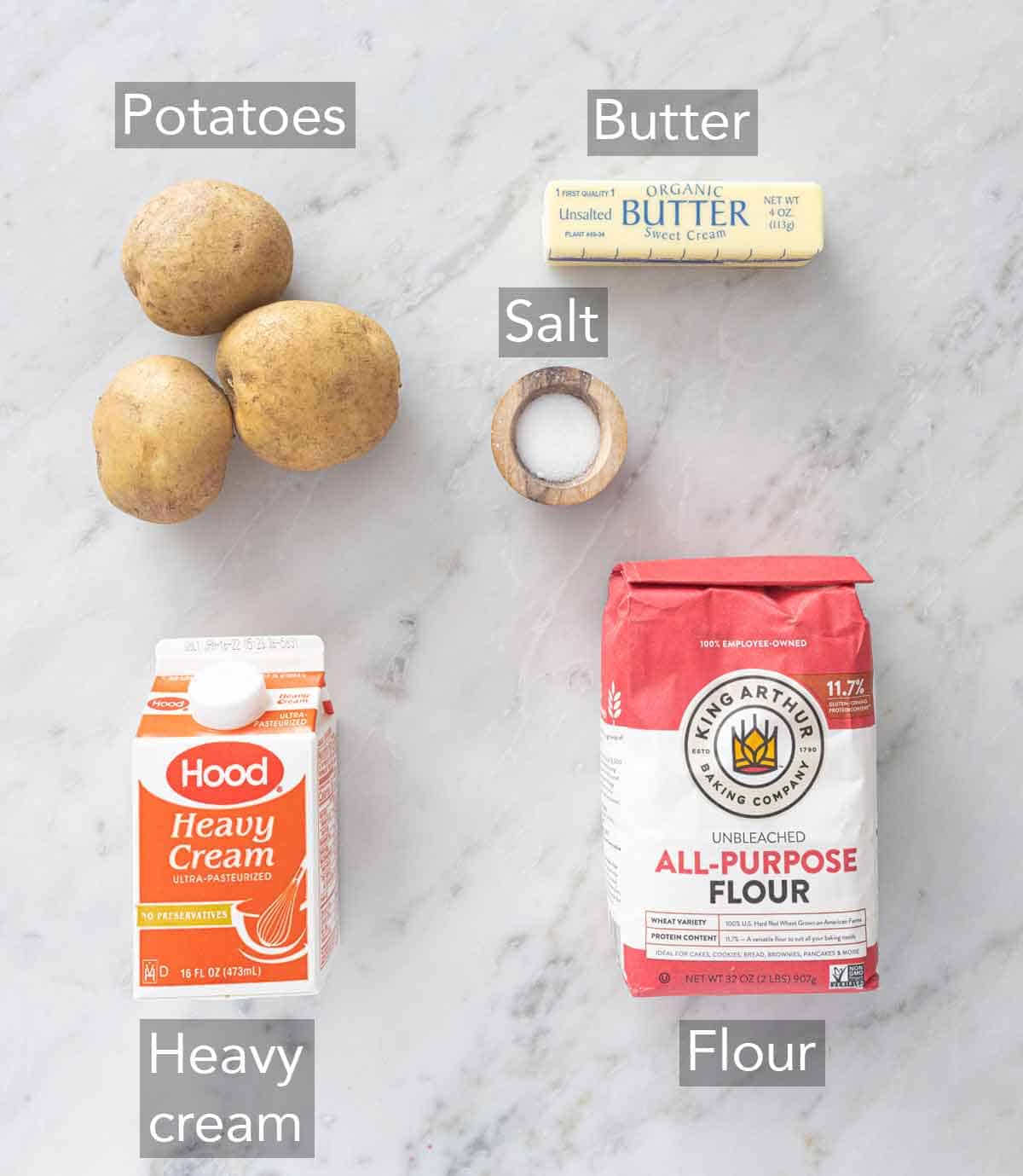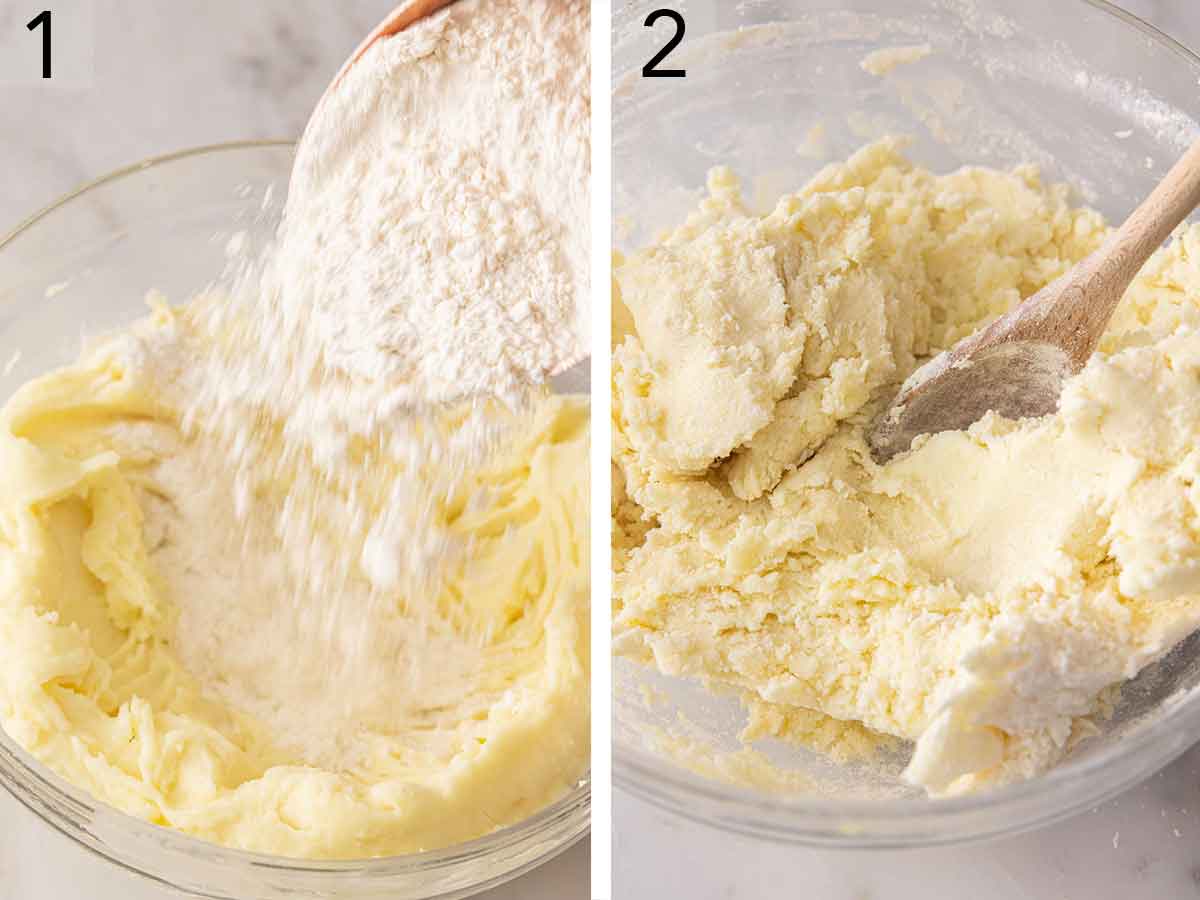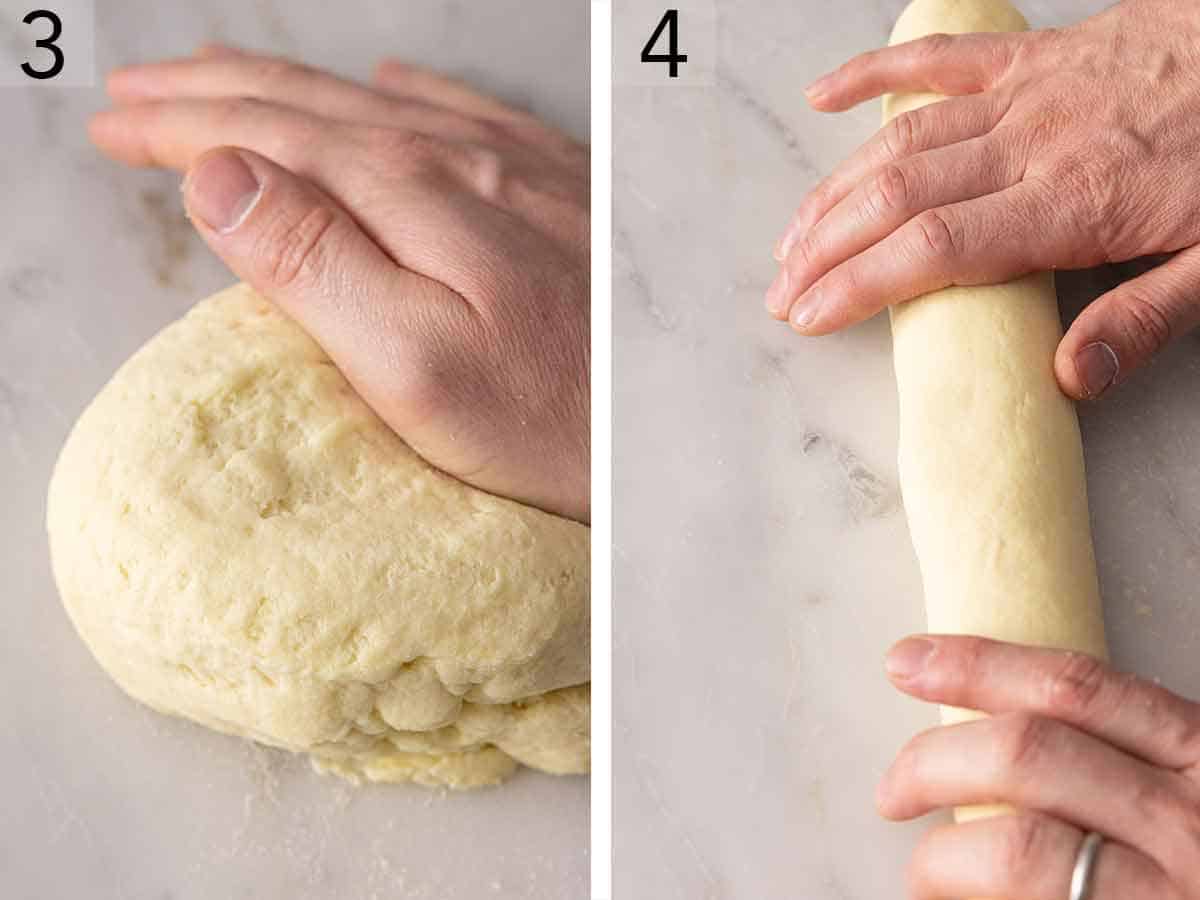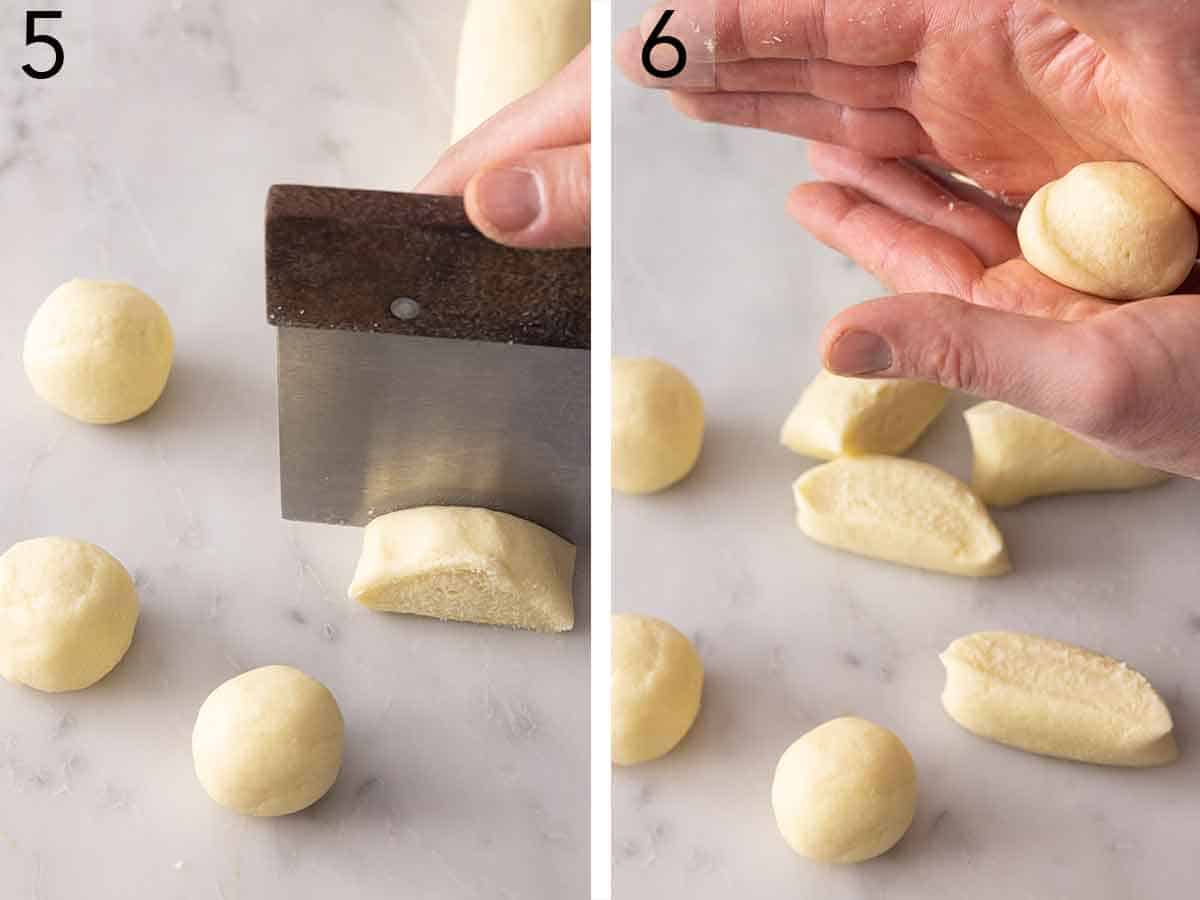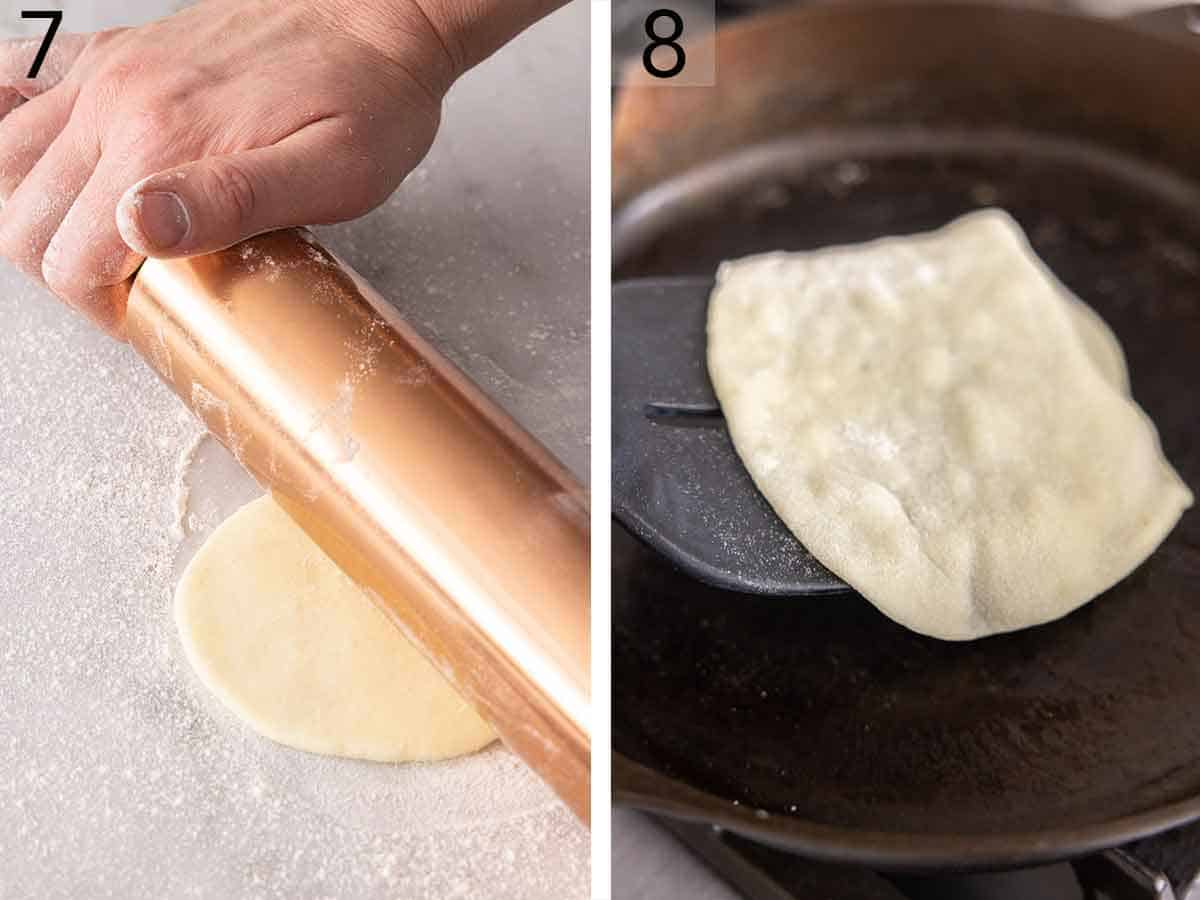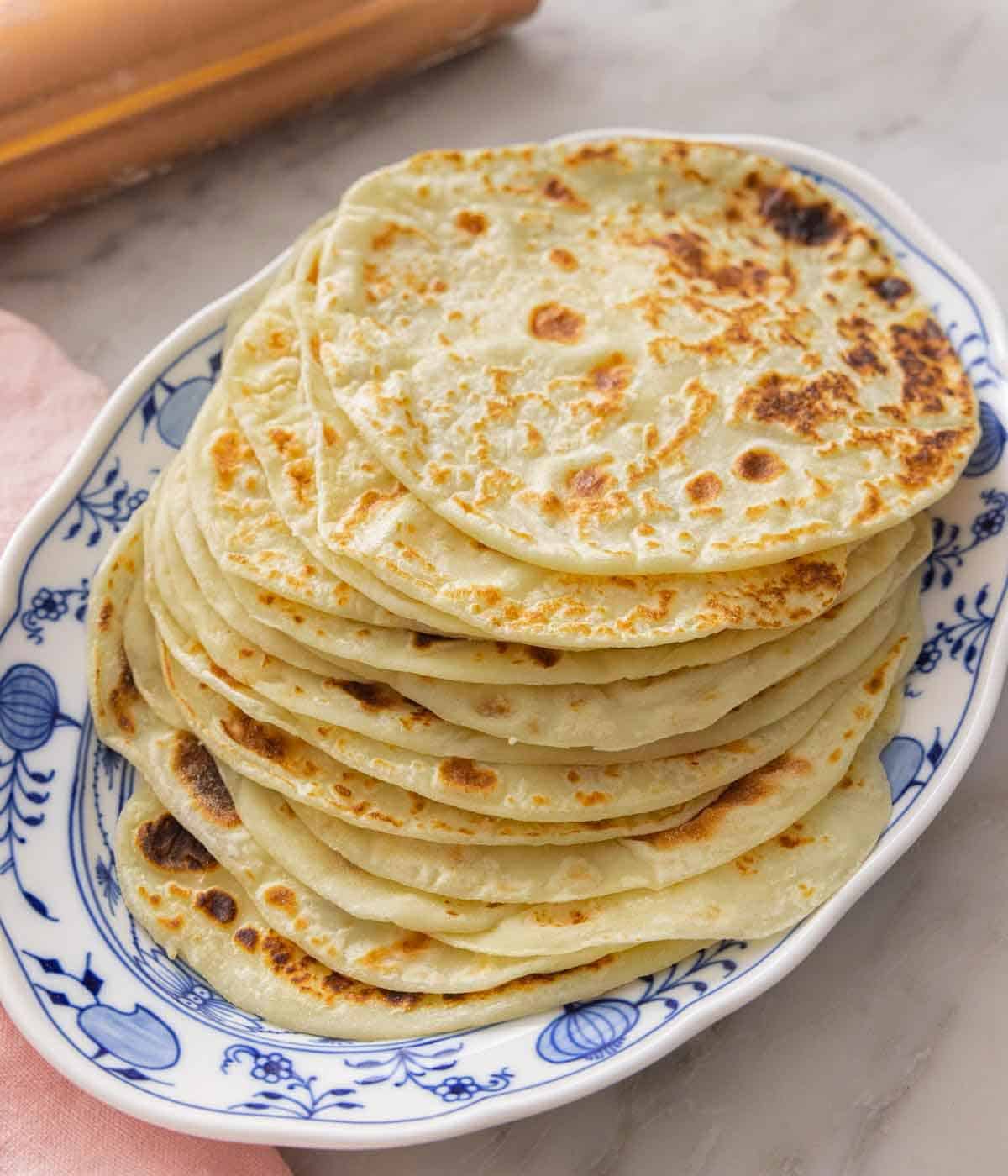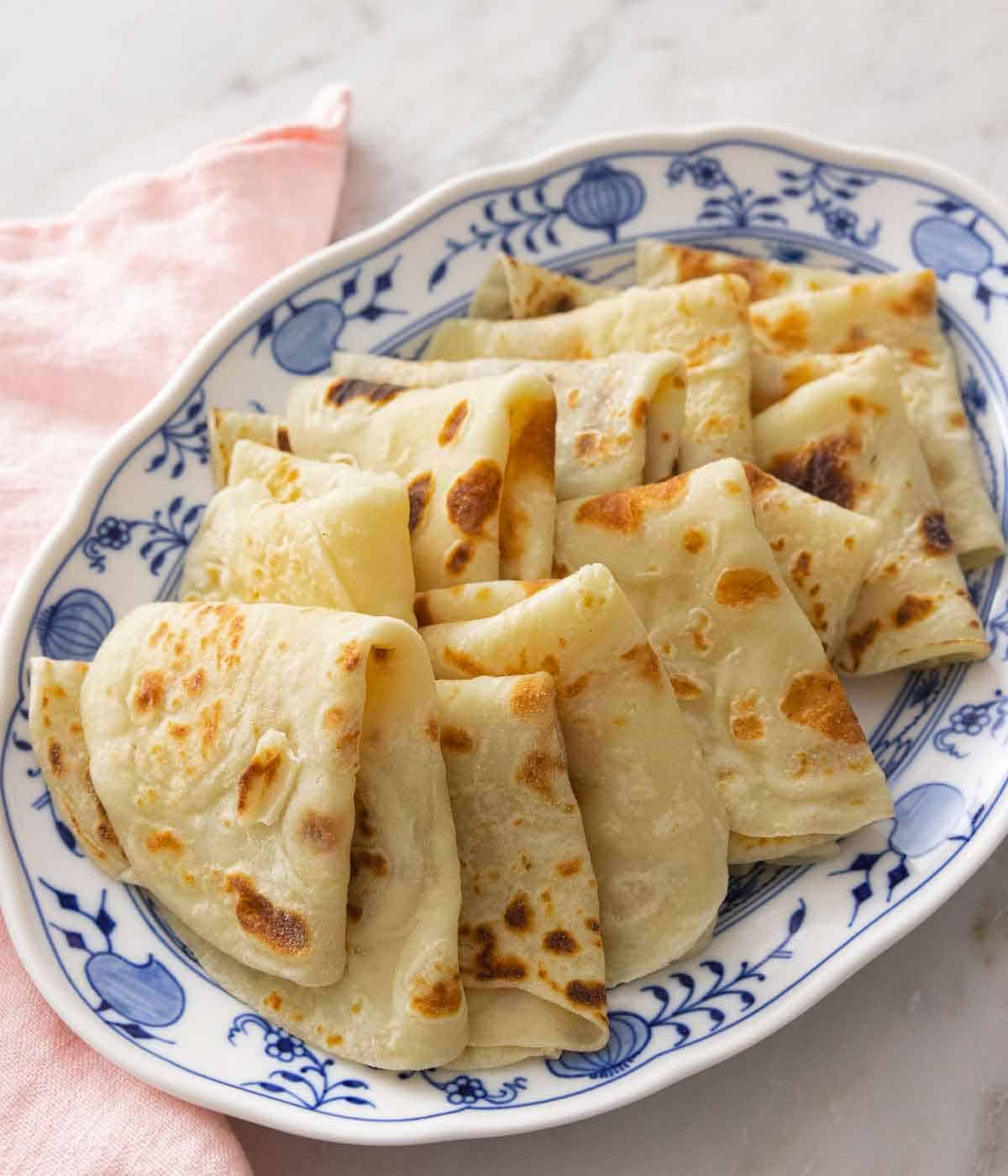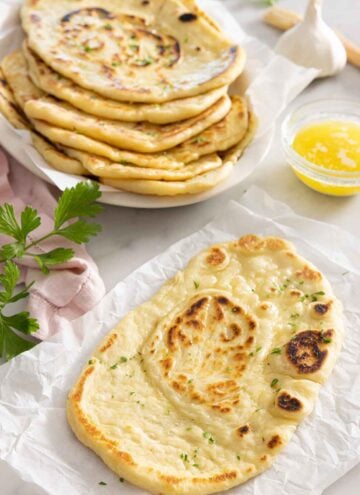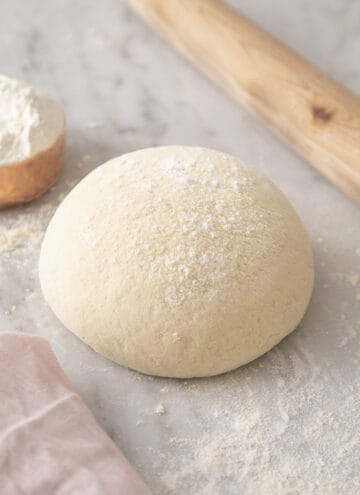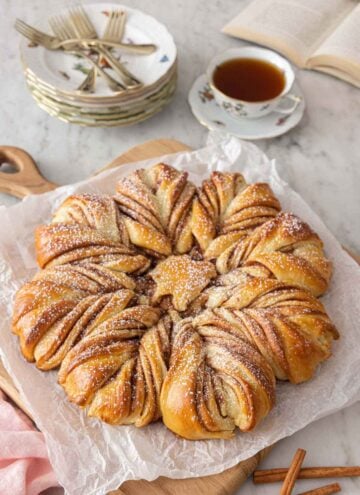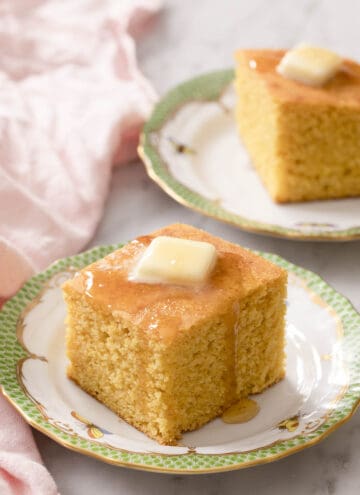You will love the simplicity and versatility of this recipe. Whether you are serving these lefse warm or cooled, I guarantee they will be eaten in a flash. For another Norwegian treat, try my rosette cookies.
What You Need to Make This Recipe
Potatoes — use russet potatoes as they have high starch and low moisture content. New potatoes or red potatoes will lead to a more wet batter, making it difficult to knead. Butter — use unsalted butter as there is already salt added in the recipe. Salted butter has different amounts of salt across different brands. Heavy cream — the high-fat content of the heavy cream gives you the elasticity needed to roll the dough out without tearing it. Flour — simple all-purpose flour is ideal for this lefse recipe.
How to Make Lefse
Cook the potatoes and press the potatoes through a ricer into a large bowl. Stir in butter, cream, and salt then chill. Once chilled, add the flour.
Stir the flour into the mashed potato mixture until well combined.
On a lightly floured surface, knead the dough until smooth, about 1 minute.
Roll the dough into a 16-inch long rope.
Cut the dough into 16 (1-inch) portions.
Shape each cut piece into a dough ball.
On a heavily floured surface, roll each of the dough balls into a 6-inch circle.
Heat a 10-inch cast-iron skillet or griddle over medium heat and add the dough, one at a time, and cook until speckled golden brown.
Pro Tips for Making This Recipe
Avoid adding too much flour to your dough by measuring your flour correctly! Adding too much flour to the recipe is one of the most common mistakes and will make your lefse potato flatbread dense. The best way to measure flour is by using a digital kitchen scale. You can keep the potato flatbreads warm by covering them with a tea towel or placing them in a sheet pan in a 170F oven. If you have leftover mashed potatoes from the holidays, you can repurpose them with this lefse recipe. Simply use 2 cups of mashed potatoes and skip adding the butter, cream, and salt as the mashed potatoes should already have those added. I prefer using a ricer over a masher when preparing the potatoes, as a potato ricer yields fluffier, lump-free potatoes. To help with the timing of cooking and rolling, place one rolled dough in the skillet, then immediately begin rolling the next ball. Flip and continue cooking. Remove the lefse from the skillet. Add the next rolled dough, and continue.
What do you eat this with?
Enjoy this lefse recipe on its own with some butter spread in the middle. You can also spread some jam or sprinkle cinnamon sugar onto the lefse as a sweeter dessert option. You can also turn this into a delicious savory meal by pairing it with ham and cheese, smoked salmon, or using it like you would a tortilla.
What does this flatbread taste like?
Your lefse should taste slightly salty and buttery and like potatoes. It should practically melt in your mouth and shouldn’t have a taste of flour.
Why is my flatbread rubbery?
The main culprits of rubbery lefse are adding too much flour or over-kneading the dough. Overworking the dough will make your lefse very tough.
How do I store these?
Store leftover lefse in an airtight container or zip-top bag to prevent them from drying out. They last for up to 5 days in the refrigerator. Feel free to enjoy them straight from the fridge or reheated.
Is this freezer-friendly?
You can definitely freeze this lefse recipe. I recommend layering each piece of lefse with a piece of parchment paper in between so they do not stick together. You can pull them out as needed this way. Place them in a freezer-safe bag, and when ready to enjoy, thaw them overnight in the fridge. If you’ve tried this Lefse recipe, then don’t forget to rate the recipe and let me know how you got on in the comments below, I love hearing from you!
